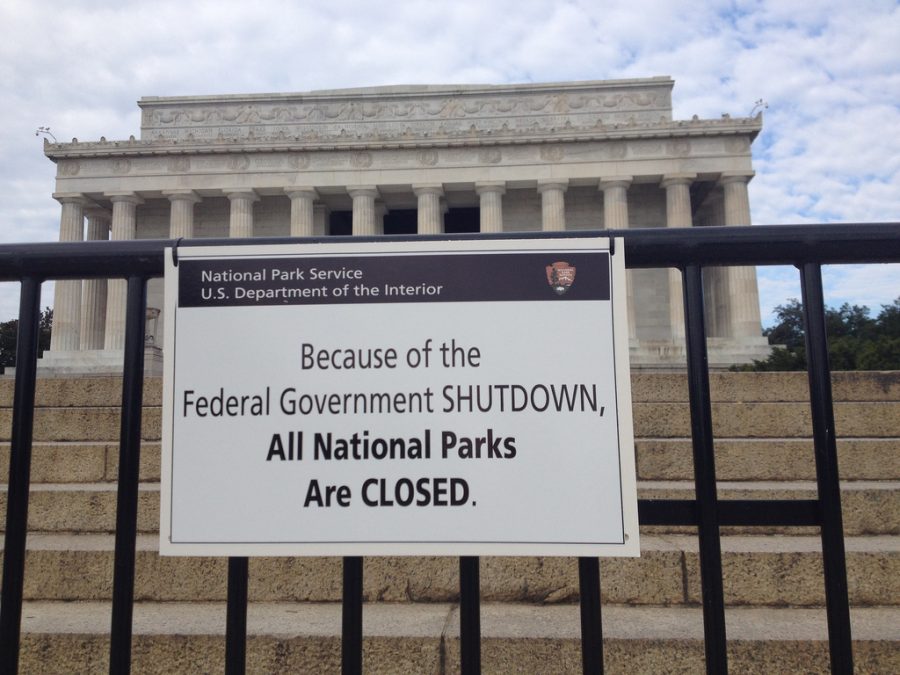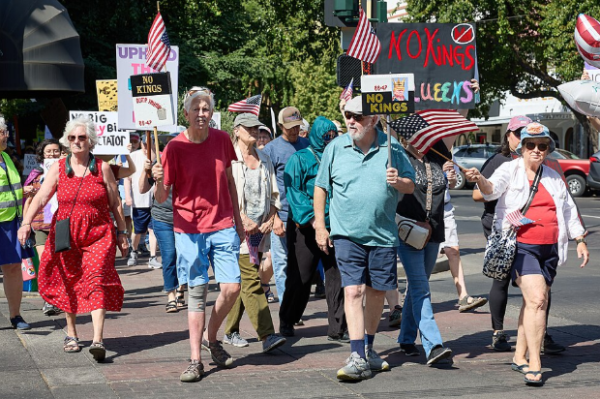The longest government shutdown in history
Hanging in front of the Lincoln Memorial, a sign tells the public that all National Parks are closed as a result of the pending government shutdown. The longest government shutdown in history occurred this year and has left 800,000 government workers without pay.
January 24, 2019
After 34 days of the government shutdown, there has been little progress in negotiations between President Donald Trump and Speaker Nancy Pelosi. Recent developments report that they are getting closer to reopening and becoming more willing to compromise with 800,000 government workers not getting paid.
Last week, President Trump held a lunch at the White House with various moderate-democrats in an attempt to bypass Speaker Pelosi, but none of the representatives, showed up. However, over the weekend Speaker Pelosi and President Trump made some progress. President Trump promised a three-year extension to the Deferred Action for Childhood Arrivals (DACA) program and to those with Temporary Protected Status (TPS) in return for $5.7 billion for his wall. Senate Majority leader Mitch McConnell is pushing the Senate to vote on Trump’s newest proposal within the next week.
Regardless of the progress, the United Democratic front insists on the reopening of the government before there are more negotiations on the topic of the wall, one of Trump’s biggest campaign promises. However, Trump refuses to reopen the government until there is funding for the wall. On Wednesday, Speaker Nancy Pelosi denied President Trump access to give his State of the Union Address until the government reopens. The State of the Union Address is given to members of both parties of Congress, Supreme Court Justices, invited guests, and watched by millions on their televisions. The only State of the Union Address that was postponed in history was in 1986 by former President Ronald Reagan, after hearing about the Space Shuttle Challenger disaster.
The government shutdown has begun to cause substantial economic repercussions. The updated analysis from the Council of Economic Advisers, as well as from sources outside of the White House, show that the shutdown could put the US into an economic contraction, potentially causing the unemployment rate to increase. In an effort to counteract these effects, the administration called some government workers back to work without pay to process taxes, safeguard flight safety, and check food and drugs. In addition, food stamps have been guaranteed through February, but the United States Department of Agriculture (USDA) does not have enough to distribute for March. The February food stamps are being given out early, which means that families will have to stretch them for six weeks, rather than four.
The shutdown has also led to the closing of National Parks as well as increasing absences in TSA jobs. People vacationing to visit National Parks are left without the experiences they traveled for. TSA absences are a result of these government employees not getting their paychecks and could lead to dangerous situations if they are not there to check for threats in passenger’s luggage. Junior Genny Hauser commented, “Trump says he’s proud to shutdown the government, but what he is really proud of is the pain he’s causing hardworking families who cannot make ends meet. It’s scary to see the the amount of people the shutdown affects and how Trump can’t notice that what he is doing is detrimental to America. There is no border wall worth the suffering of people.”
The US government has been shut down due to partisan divides over polarizing issues and the refusal to pass federal funding bills in the past. The first shutdown was in 1976, and since then there have been twenty shutdowns, cumulatively adding up to 110 days. This year’s shutdown, which began on on December 22, is the longest in the nation’s history. The government can only reopen if a compromise is made between two headstrong parties, each getting something that they want.













